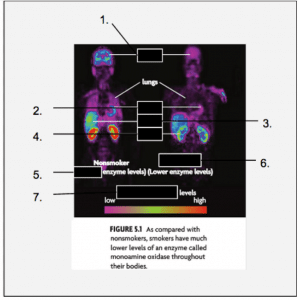Quali sono le istruzioni della parte Reading dello IELTS?
L’IELTS è composto da 4 prove: il Listening, il Reading, il Writing e lo Speaking. Il Reading è la seconda tra le prove dell’IELTS. Utilizzando un buon metodo di lavoro, potrai guadagnare facilmente dei punti al Reading. In questa prova devi cercare delle parole in 3 testi dai quali vengono estratte 40 domande. Non dovrai inventare nulla, ma semplicemente trovare, nel modo più rapido possibile, le parole precise che ti vengono chieste.
Per acquisire questo impegnativo metodo di lavoro, GlobalExam ti offre la possibilità di realizzare una specifica preparazione IELTS online, con centinaia di ore di esercizi e prove pratiche che ti aiuteranno ad aumentare il tuo punteggio al Reading.
Nota bene: la sola differenza tra lo IELTS Academic – Reading e lo IELTS General Training – Reading è la tipologia dei testi proposti. I suggerimenti seguenti sono quindi utili a tutti i candidati IELTS.
Qual è la struttura della prova?
Nella tabella seguente riassumiamo brevemente la struttura della prova.
| IELTS – Reading | Struttura |
|---|---|
| La composizione della prova | - La prova IELTS Reading si compone di 3 sezioni corrispondenti a 3 testi, proposti in ordine di difficoltà crescente. - I testi sono tratti da libri, giornali o riviste. Le tematiche sono generali. - Hai un’ora per rispondere alle 40 domande. Ti consigliamo di dedicare 15 minuti al primo testo, 20 minuti al secondo e 25 minuti al terzo. |
| Le domande | - Devi rispondere a una serie di 40 domande, basate su esercizi di diverso formato (quiz, testi da completare, collegamenti tra domande e risposte, schemi da completare). - Ogni risposta corretta ti dà 1 punto. Non vengono attribuiti punteggi negativi. - Tutte le risposte si trovano nei testi. |
| Il foglio di risposta | - Devi rispondere su un foglio di risposta fornito all’inizio dell’esame*. |
*Esempio di foglio di risposta di una prova Reading tratta dal sito ufficiale dello IELTS.
Reading passaggio 1 (Domande da 1 a 12)
TEXT: BIOLOGY AND YOUR HEALTH
A What you eat and drink is directly related to your health. But you may not think twice about the possibility of contaminated food or water, or a lack of vitamins in your diet. Not long ago, diseases caused by vitamin deficiencies were still fairly common. The first vitamins were identified less than 100 years ago, but today the vitamins found in foods are printed on labels.
B Even today we still face food-related causes of illness. For example, you might hear about an outbreak of food poisoning, and mad cow disease was only recognized in the late 1980’s. Of perhaps greater concern to you are food allergies. Many people suffer from severe, even life threatening, allergies to foods such as peanuts and shellfish. Beyond questions about the sources of food are questions and concerns about what people eat and how much they eat. For example, scientists estimate that more than 60 percent of adults in the United States are overweight or obese. The health consequences of obesity include increased risks of diabetes, stroke, heart disease, breast cancer, colon cancer and other health problems. Biology can help you to better understand all of these health-related issues.
C An understanding of biology on many different levels –genetic, chemical, and cellular, for example — can help you make any number of lifestyle choices that affect your health. Why is it important to use sunscreen? What are the benefits of exercise? What are the effects of using alcohol, illegal drugs and tobacco? Cigarette smoke does not just affect the lungs; it can also change a person’s body chemistry and have strong negative effects on the kidneys. Non smokers normally have a normal enzyme level, while smokers have lower enzyme levels. Lower levels of monoamine oxidase in the brain can affect mood, and lower levels in the liver could contribute to high blood pressure.
Biology and the World Around You
D In 1995, some middle school students from Minnesota were walking through a wetland and collecting frogs for a school project. The students stopped to look at the frogs and what they saw shocked them. Many of the frogs had deformities, including missing legs, extra legs, and missing eyes. What caused the deformities? Scientists investigated that question by testing several hypotheses. They studied whether the deformities could have been caused by factors such as a chemical in the water, ultraviolet radiation, or some other type of infection.
E Why would frog deformities such as that provoke such scientific interest? The frogs are a part of an ecosystem, so whatever affected them could affect other species in the area. If the deformities were caused by a chemical in the water, might the chemical pose a risk to people living in the area? In other regions of the United States parasites caused similar deformities in frogs. Might that parasite also be present in Minnesota? If so, did it pose a risk to other species?
F At first, parasites were not found in the frogs. However, scientists now suggest that the frog deformities were due to a combination of infection by parasites, called trematodes, and predation by dragonfly nymphs. Science has answered some questions about the cause of the leg deformities. However, scientists now think that a chemical may be connected to the increased number of parasite infections.
G Suppose that the chemical comes from a factory in the area. Is it reasonable to ban the chemical? Should the factory be closed or fined? In any instance like this, political, legal, economic, and biological concerns have to be considered. What is the economic impact on the factory on the area? Is there any evidence of human health problems in the area? Is there a different chemical that could be used? Without an understanding of biology, how could you make an informed decision related to any of these questions?
H These are the types of questions that people try to answer every day. Biologists and other scientists research environmental issues such as pollution, biodiversity, habitat preservation, land conservation, and natural resource use, but decisions about the future are not in the hands of scientists. It is up to everyone to make decisions based on evidence and conclusions from many different sources.
QUESTIONS 1 – 7
Label the missing words on the diagram below using words from the following paragraph from the text :
An understanding of biology on many different levels –genetic, chemical, and cellularm for example — can help you make any number of lifestyle choices that affect your health. Why is it important to use sunscreen? What are the benefits of exercise? What are the effects of using alcohol, illegal drugs and tobacco? Cigarette smoke does not just affect the lungs; it can also change a person’s body chemistry and have strong negative effects on the kidneys. Non smokers normally have a normal enzyme level, while non smokers have lower enzyme levels. Lower levels of monoamine oxidase in the brain can affect mood, and lower levels in the liver could contribute to high blood pressure.
Write your answers in boxes 1 – 7 on your answer sheet.

QUESTIONS 8 – 12
This passage has eight sections, A-H.
Choose the correct heading for sections B, C, E – G and from the list of headings below.
Write the correct number i-ix in boxes 8-12 on your answer sheet.

- Section B __________
- Section C __________
- Section E __________
- Section F __________
- Section G __________
Quali sono le strategie da conoscere per superare la prova?
Una strategia per superare il Reading consiste nel comprendere e ricordare le 11 istruzioni più utilizzate nel test, che trovi riassunte nella tabella seguente.
| Tipo di domanda | Descrizione e suggerimenti |
|---|---|
| Multiple choice (domande a risposta multipla) | - Una o più risposte corrette (solitamente 4 scelte: A, B, C o D). - Le domande seguono l’ordine cronologico del testo. |
| True/False/Not Given Yes/No/Not Given | - “True”, “Yes”= l’affermazione è giustificata da un’informazione del testo - “No”, “False” = l’affermazione è contraddetta da un’informazione del testo - “Not given” = l’affermazione non può essere né contraddetta né giustificata da un’informazione del testo - Attenzione a non rispondere “Yes/No” se la consegna chiede di rispondere “True/False”, perché non avrai diritto al punto. |
| Matching information Matching features | - Collega un’affermazione specifica al paragrafo cui si riferisce (“Men discovered fire 790 000 years ago”→ (“The keys to human growth and development”) - Il numero di affermazioni può essere superiore a quello dei paragrafi (5 paragrafi per 7 affermazioni). - Uno o più paragrafi possono non essere utilizzati. |
| Matching headings | - Collega ogni paragrafo al titolo corrispondente (paragrafo B -> titolo II: “The keys to human growth and development”) - I titoli sono in numeri romani (I, II, III, IV, V...), i paragrafi sono in lettere (A, B, C, D, E…) - Ci potrebbero essere più proposte di titoli che paragrafi (5 paragrafi per 7 titoli). - Uno o più paragrafi possono non essere utilizzati. |
| Matching sentence endings | - Completa l’inizio di frasi riportato nella consegna. - Possono esserci più inizi di frasi che finali da cercare (7 inizi di frase per 4 finali di frase). - Gli inizi di frase seguono l’ordine cronologico del testo. |
| Sentence completion | - Trova le parole corrispondenti a ogni informazione mancante (testo a buchi). - Possono essere proposte più parole rispetto alle informazioni da collocare (6 parole per 4 informazioni mancanti). - Attenzione al limite dele parole (“No more than 2/3 words”)! |
Summary/note/table/flow chart completion | - Completa il riassunto del testo utilizzando le parole del testo. - Il riassunto può essere scritto in forma di testo continuo, commenti, tabella o caselle da completare. - Le risposte non si trovano nell’ordine cronologico del testo, ma possono trovarsi nello stesso paragrafo. |
| Diagram label completion | - Completa le caratteristiche di un diagramma utilizzando le parole del testo. - Il diagramma può essere una macchina, una costruzione o qualsiasi altra informazione che può assumere la forma di un diagramma. - Attenzione al limite dele parole (“No more than 2/3 words”)! |
| Short-answer questions | - Rispondere a domande complesse con le informazioni trovate nel testo. - Attenzione al limite dele parole (“No more than 2/3 words”)! Le parole composte come check-in sono considerate una parola unica. |
Gestire bene il proprio tempo è indubbiamente uno dei segreti per superare il test del Reading. Hai un’ora per rispondere alle 40 domande e spetta a te organizzare il tempo come vuoi. Dal momento che i testi sono presentati in ordine di difficoltà crescente e che l’ultimo passaggio contiene il maggior numero di domande, ti consigliamo di suddividere il tempo a disposizione in modo da dedicare 15 minuti al 1° passaggio, 20 minuti al 2° e 25 minuti al 3°.
I suggerimenti di GlobalExam
- Suggerimento n°1: Anche se può sembrare ovvio, è indispensabile leggere attentamente ogni consegna.
In effetti, le consegne cambiano da una domanda all’altra e un’affermazione compresa erroneamente può farti perdere un punto. Per esempio, se ti viene chiesto di rispondere “Yes, No or Not Given”, devi rispondere in modo preciso. “Yes” significa che la domanda è valida, “No”, che la domanda non è valida, “Not Given”, che la risposta non si trova nel testo. Attenzione: la risposta “Not Given” non deve essere utilizzata sistematicamente in caso di dubbio. In questo caso, è meglio cercare nel testo il passaggio che contiene la risposta.
- Suggerimento n°2: Dal momento che il tempo per rispondere alle 40 domande è limitato, non soffermarti più di 3 minuti su una domanda alla quale non trovi risposta nel testo.
È meglio saltare la domanda e tornarci alla fine, invece di accanirsi e perdere troppo tempo.
L’allenamento online per il test su GlobalExam
GlobalExam è una piattaforma online di allenamento ai test linguistici, che ti permette di svolgere degli esercizi tipo e delle prove pratiche nelle condizioni reali d’esame.
Ogni esercizio include una correzione dettagliata, e delle schede di lessico e grammatica sono a tua disposizione se hai bisogno di ripassare alcuni argomenti.
Inoltre, puoi provare la piattaforma gratuitamente. Ti basta registrarti, per avere accesso a una prova pratica completa, senza alcun costo!



